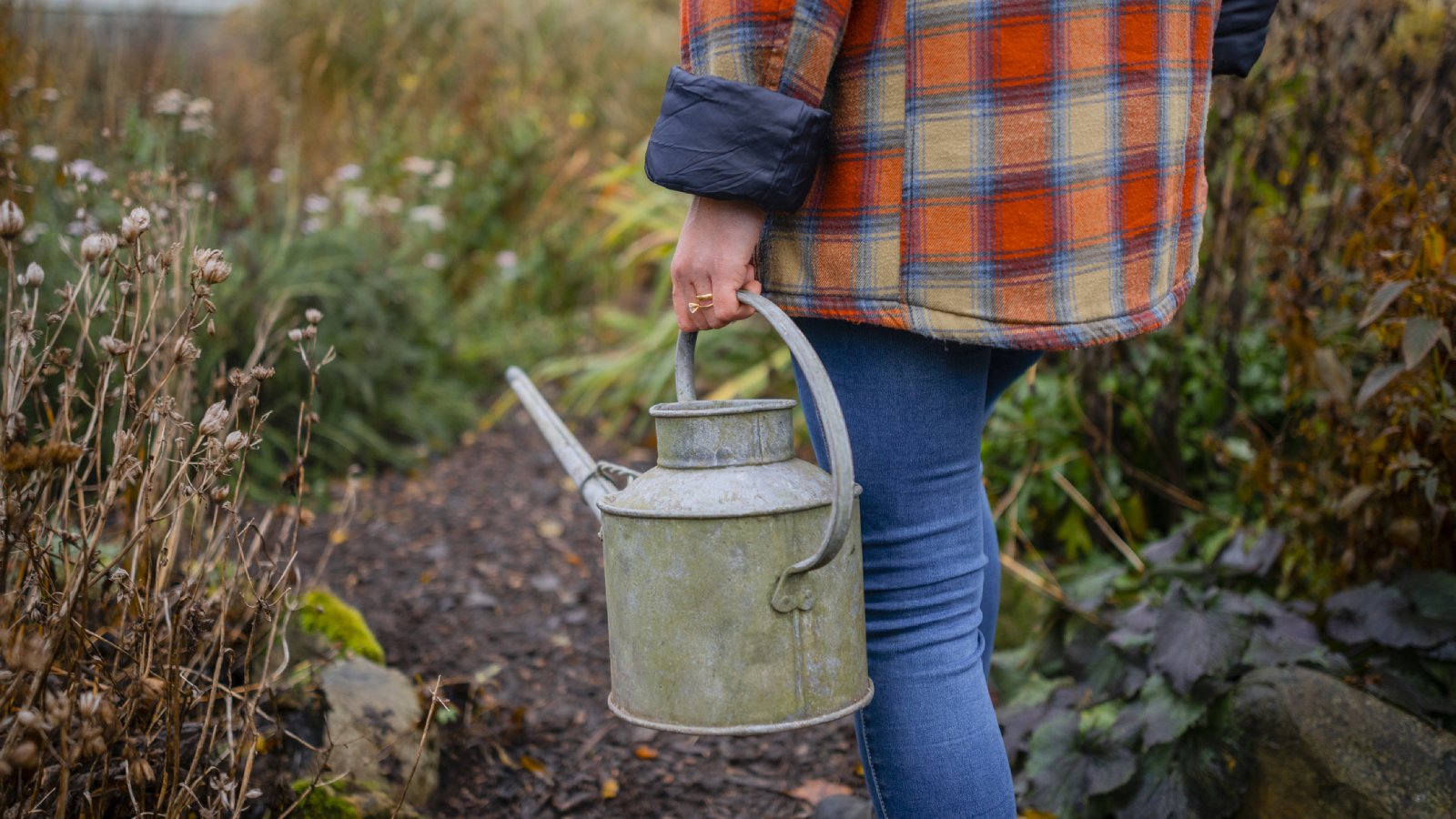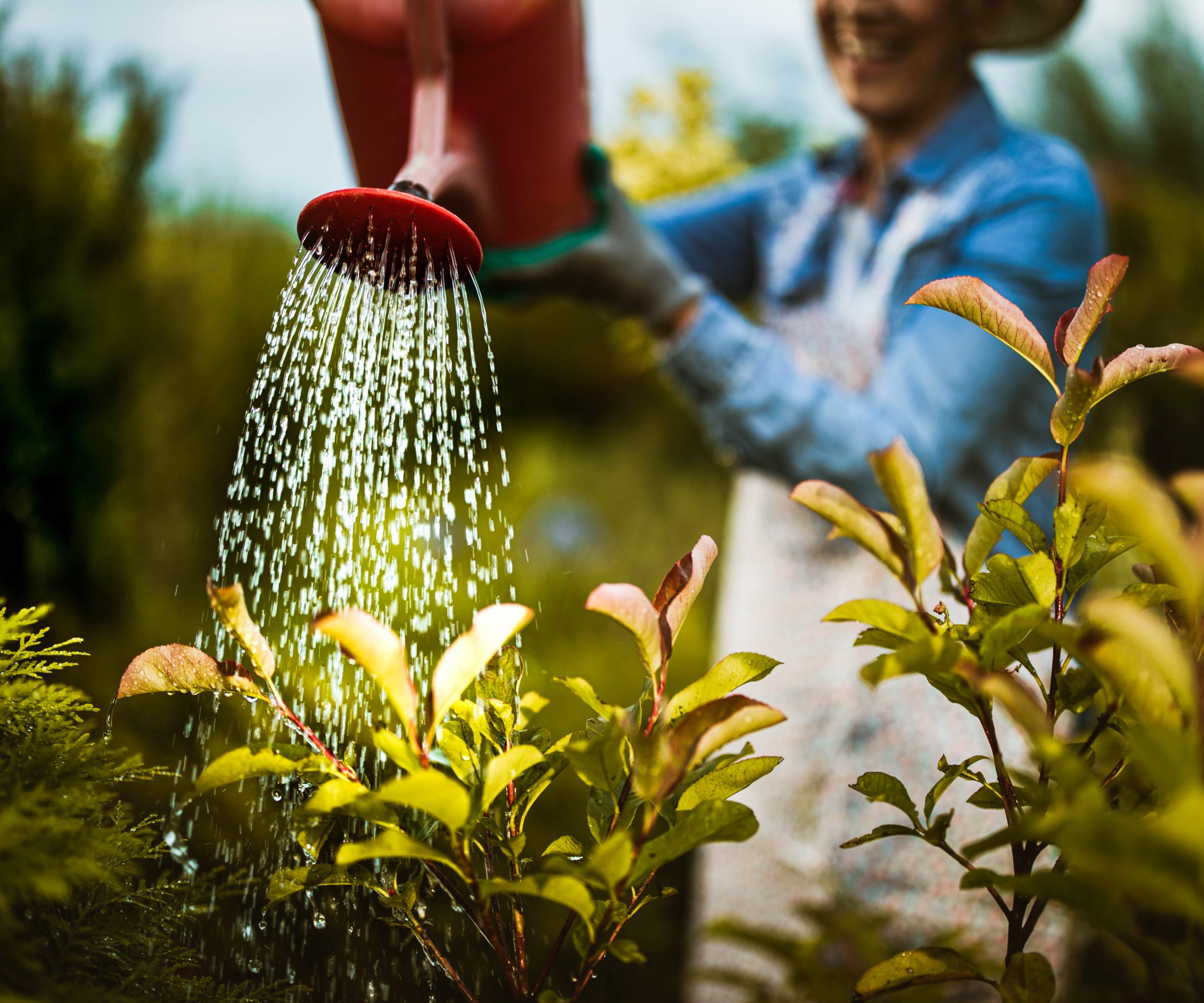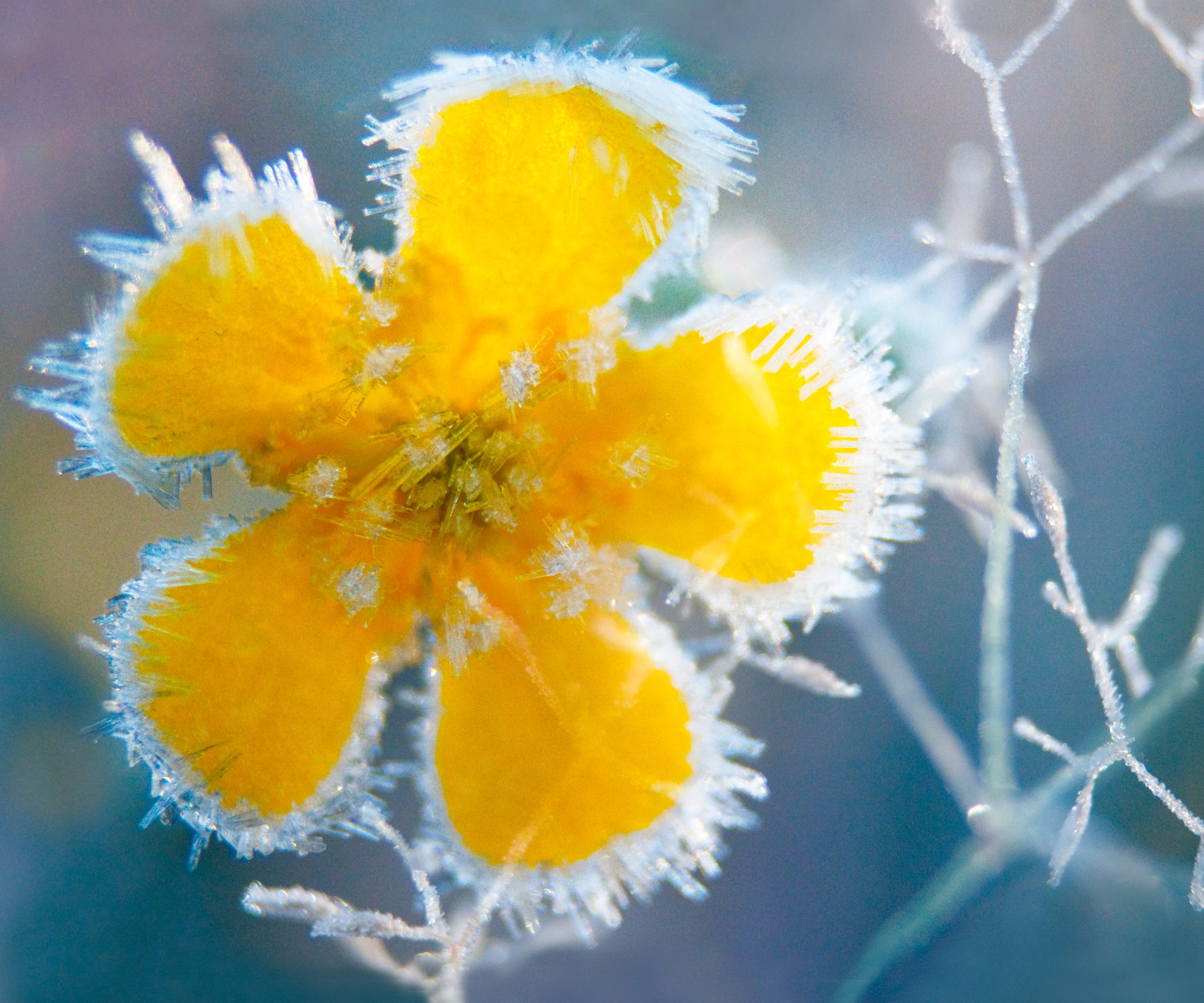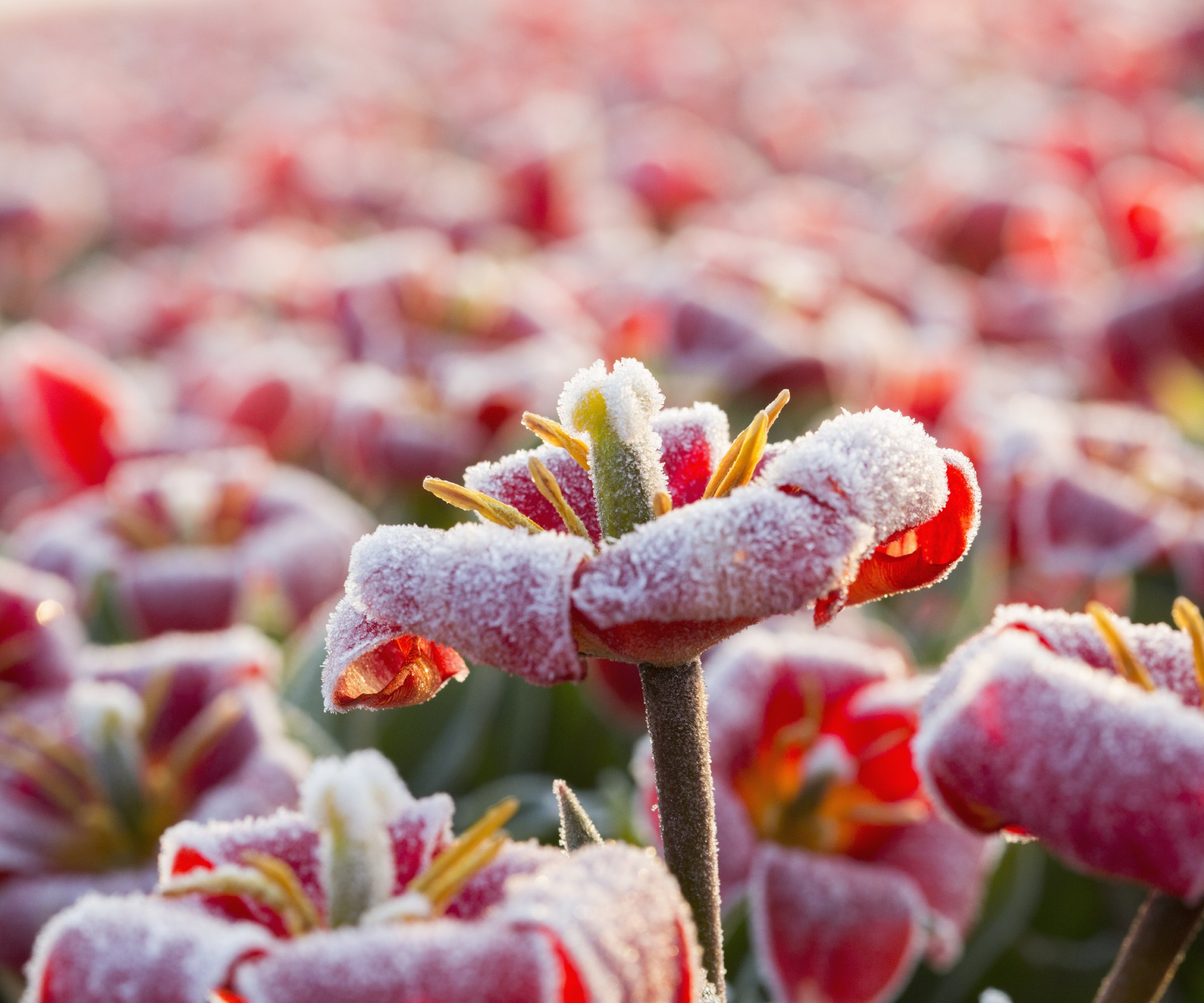Should You Water Plants Before A Freeze? This Simple Trick Can Save Plants
Did you know you should water plants before a freeze? Learn how it can actually protect them, and understand the difference between a frost and a freeze.

Temperatures are dipping fast – should you water plants before a freeze? You may have heard that you should, but is it true? After all, watering plants before a freeze seems counterintuitive. So what’s the truth?
Should I water my plants before a freeze? Find out if you can protect your plants in a freeze by watering them.
Should You Water Plants Before a Freeze?

Whether you should or should not water plants before a freeze depends on a couple of things. First, recognizing the difference between a frost and a freeze and second, the type of plant(s) you wish to protect.
Most of us assume that temperatures below 32 F (0 C) can result in damage to plants, and that the words frost and freeze are interchangeable. Frost forms when air temperatures fall below 36 F (2 C), while freezes occur when that air temp drops below 32 F (0 C). The difference between the two terms means the difference in whether you should water plants before the temperature drops or not.
Difference Between Frost and Freeze

Frost occurs when winds are calm, the air is dry and there is no cloud cover. Frost is essentially frozen dew that tends to last only minutes to a few hours.
A freeze means there is a strong cold air mass covering an area combined with winds that are at least 5 mph. A freeze warning is put into effect when there is an 80% chance that temperatures will dip below 32 F (0 C) or lower. Freezes usually last all night long.
When a frost is imminent, growers can usually protect plants by covering them. When a freeze warning is in effect, watering plants is a better way to protect them from longer-term low temperatures.
Gardening tips, videos, info and more delivered right to your inbox!
Sign up for the Gardening Know How newsletter today and receive a free copy of our e-book "How to Grow Delicious Tomatoes".
Another thing to keep in mind is the type of plants you want to protect. Some plants sail through multiple frosts with no protection at all, provided they don’t turn into long-term freezes. Other plants are not frost-hardy and should be protected in some manner.
Why Watering Protects Plants From Cold
Drought-stressed plants are more prone to cold damage; plants that are really stressed in general are even more susceptible to damage from cold.
Watering just before a freeze helps the plant by creating warmth. Yes, it seems odd that water on plants can help them survive a freeze but think back to your physics classes.
When water changes form, from a liquid to a frozen solid or vice versa, it either requires or gives off energy. When water freezes, it releases energy in the form of heat. Surprisingly, the heat released as the water freezes does indeed protect the plants from cold injury. Especially if you cover the plants as well as water them before a freeze.
Watering Plants After a Freeze
Water plants 24-48 hours before a frost is predicted. The moist soil will hold 4x more heat than dry soil! Even though commercial growers do it, do not run your irrigation system during a freeze. You’ll likely end up with sodden soil and unhappy plants prone to fungal disease
If you didn’t pay heed to the weatherman or a freeze came out of nowhere, after a freeze can be also a good time to water plants. It can help them recover from any frost damage and dehydration. No need to water, however, if the soil is already wet.
More Ways to Protect Plants From Freezing

Beyond watering plants, there are other ways you can protect plants from a freeze. If possible you can bring them inside or into an attached garage or unheated basement. If that’s not an option, move them to the east or south side of a structure or beneath a tree. Keep all the plants grouped closely together to benefit from the others’ heat.
You can also wrap plants with insulation, old blankets, newspapers, burlap, or even bubble wrap. Remember to unwrap after the freeze to allow the sunlight to reach the plants.
Some people also festoon at-risk trees or shrubbery with electric lights. Be sure to turn these off when temperatures warm.
Additional Ways to Protect Plants from Freezes
Prepare your plants for imminent freezes. Quit fertilizing them with nitrogen-rich food in the late summer and reduce irrigation in the fall.
If you really want to think ahead, where you put your plants in the landscape can protect them from freezes. Plants that are not frost-hardy should be planted in the highest area of the yard since cold pockets form in the lowest areas. The north side of the house is the best geographical location for tender plants.
Situate plants against a cold hardy evergreen hedge or dense area of trees and shrubs to further provide protection from the cold.
Tender plants should also be located in partially shaded areas if possible since a slow that damages them the least. Shaded exposures also retard new spring growth which is at risk of cold injury from late spring frosts.
Frequently Asked Questions
What temperature is too cold to water plants?
In general avoid watering plants when temperatures are below 40 F (4 C), unless your goal is to protect the plant from imminent frost injury using water as a protectant.
Does watering prevent frost damage?
Yes, watering can protect plants from frost damage. As strange as it may seem, as the water freezes, it gives off energy or heat that can warm the plant up enough to prevent cold injury.

Amy Grant has been gardening for 30 years and writing for 15. A professional chef and caterer, Amy's area of expertise is culinary gardening.
-
 Terrifically Tubular Flowers For Hummingbirds: 9 Tube-Flowered Plants To Attract Hummers
Terrifically Tubular Flowers For Hummingbirds: 9 Tube-Flowered Plants To Attract HummersGrowing tubular flowers for hummingbirds helps you create the optimum feeding conditions for your winged friends. Here are nine tubed delights for hummers
By Tonya Barnett
-
 How To Grow Hydroponic Tomatoes For Fresh Indoor Harvests – No Soil Required
How To Grow Hydroponic Tomatoes For Fresh Indoor Harvests – No Soil RequiredLearning how to grow tomatoes in water is easy and allows you to harvest fresh-home-grown produce in every season without any mess.
By Ellen Wells